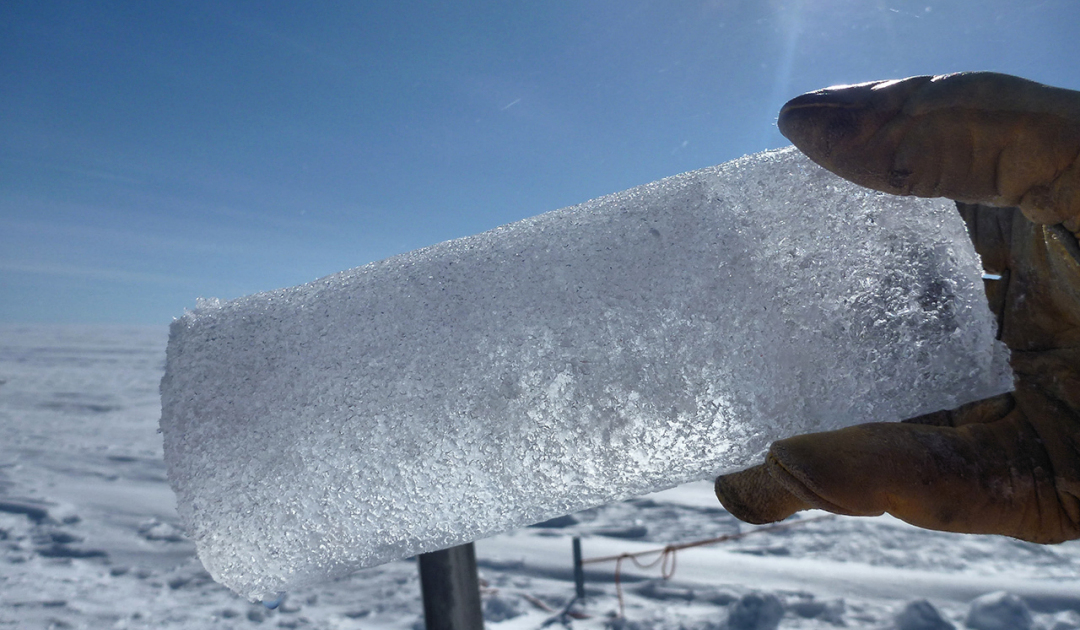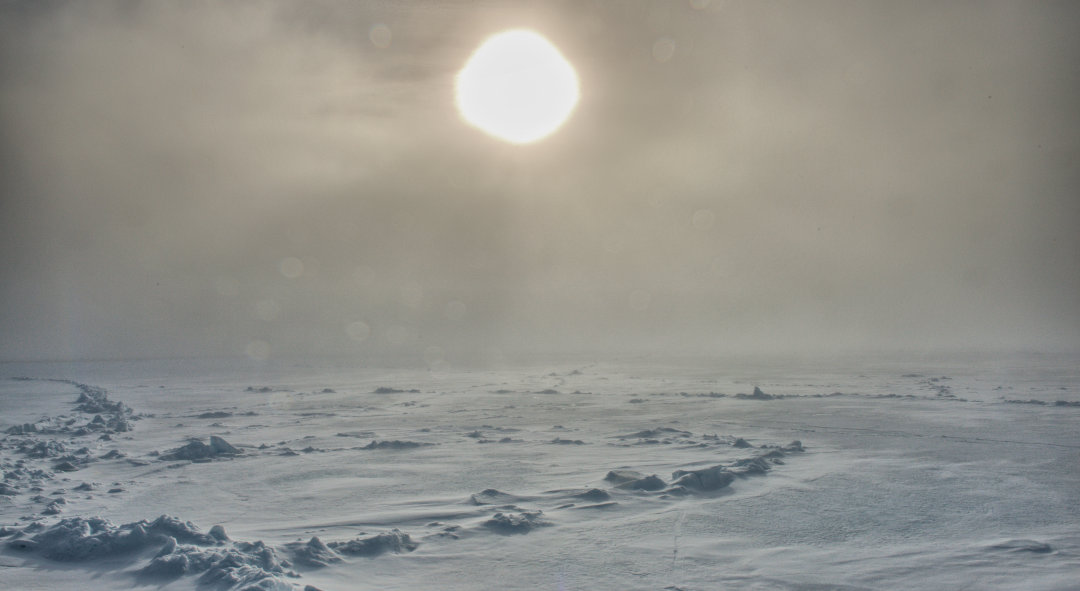
Finding out the reasons why the Earth’s climate keeps changing has become one of the most important branches of research due to climate change. One of the most important techniques for this today, the measurement of gases such as carbon dioxide in air bubbles from the ice of Antarctica and Greenland, was already known in the 1960s. But at that time, the samples still gave results that did not match the actual amounts in the air. Somewhere there was a mistake that no one could detect. It was not until 1980 that two French researchers succeeded in solving the mystery and developing a protocol that is still generally accepted and valid today.
The work of the two glaciologists Robert J. Delmas, Michel Legrand and Jean-Marc Ascencio was not actually designed to change the technique that had been used up to that point. In this, the ice was melted and the gas samples in the ice were measured. But Delmas and his two students had studied ice samples from Greenland as part of their work on acid rain. They discovered that even in samples where there was no residue of volcanic or human activity, there was still sulfuric acid from sulfur-containing components that came from plankton. If this acid reacts with carbonaceous dust in the ice as it melts, additional carbon dioxide is produced, which then completely distorts the measurements. So they developed a dry method to be able to analyze the air in the ice. To do this, ice was crushed under vacuum and at – 40°C, and the air in the bubbles was then analyzed. Their samples came from Antarctica and provided data for the past 35,000 years. Their experiment showed that a decrease in CO2 concentration in the ice exactly matched a decrease in temperature 20,000 years ago and an increase in CO2 exactly matched a temperature increase 10,000 years ago.

At the same time as Delmas, a Swiss research group was also working on ice samples, using wet extraction, which was still common at the time, but in a more refined way. Their results showed that CO2 concentrations declined at the end of the last ice age, cementing the results of Delmas and his colleagues. However, since their method was more accurate and easier to repeat, Delmas’ “dry measurement method became established, paving the way for today’s methods of measuring carbon dioxide and other gases from air bubbles from the depths of the Antarctic ice sheet. Nowadays, current measurements allow us to look back into the past up to almost 1 million years. They clearly show that CO2 concentration and global temperature go hand in hand due to glacial-interglacial climate cycles. This has also allowed climate scientists to show that climate and carbon cycles are parts of a global, interacting system.

The two systems, which play a role in the repeating warm and cold periods, were explained in theory as early as the 19th century. While the Swedish scholar Svante Arrhenius related the temperature fluctuations of the ice ages to the amount of CO2 in the air and its ability to retain radiating geothermal heat in the atmosphere, the Scottish naturalist James Croll had a different idea. In his opinion, the glaciation cycles were the result of changes in the Earth’s orbits, which would be amplified by natural feedbacks such as the amount of snow. This idea was taken up again in the 1930s by the Serbian naturalist Milutin Milankovic, who had noted subtle variations in the earth’s movements and the resulting changes in the amount of solar radiation at different latitudes. Both observations of that time are now established as the reasons for glacial-interglacial cycles: While recurrent axial and orbital oscillations signify the timing of glacial cycles, the amounts of CO2 in the atmosphere and the reflectivity and absorptivity of the Earth’s surface (due to the amount of ice and snow) control the nature and extent of the changes.

The measurement method developed by Delmas, Legrand and Ascencio 40 years ago now shows us that at no time in the past 800,000 years has the CO2 concentration in the air increased as rapidly as between 1850 and today. While just 1800 ago the amount was 280 ppm (parts of CO2 per million parts of air), today we are at 410 ppm and rising. Work and measurements are currently underway in Antarctica to bring ice cores to the surface that look back as far as 2 million years. At the same time, the researchers also want to find out what caused the climate cycles, which until 1.2 million years ago had followed a regular 40,000-year cycle, to change relatively suddenly to 100,000 years. Researchers hope that this, too, is written in the ice of Antarctica.
Dr Michael Wenger, PolarJournal
More on the subject:





